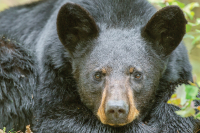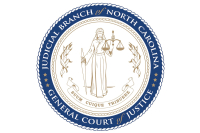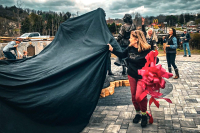Another eventful day in Bryson City
The whistle of the excursion train on the far side of the river shrieked three times. From where I sat in the graveyard on the knoll overlooking Bryson City, I could see tourists waving from their windows the way travelers never do when departing on a trip that’s really going somewhere.
It was an eventful afternoon. From my vantage point I watched a dog hike his leg and pee on the Federal Building wall. A hiker came out of Bojangles and gave him a biscuit. He smiled the way dogs do as he watched her walk away. Then he yawned … wheeled counterclockwise as if chasing his tail … and lay down all curled up in the sun by his wall.
A flock of pigeons arose from under the lower bridge where they roost and circled the knoll on flexed wings the way pigeons do before settling one by one on the gold copula atop the old courthouse.
A breeze descended from the high country north of town and skimmed over the Tuckasegee River gathering moisture before passing through the oak grove on the knoll. Each tree stood attentive with branches outspread over graves that had settled and intermingled generations ago. As if magnetized by the water from the river their leaves glowed in the mid-day light. A blue jay screaming “Thief!” brought me back to earth.
For some graveyards are morbid places. When I was a boy, I never liked to pass by or walk through one … especially in the dark. These days I rather enjoy visiting them ... for awhile. They are generally quiet. And unlike most modern cemeteries, which have few if any trees at all, graveyards usually have a variety of old sometimes ancient trees.
Related Items
Trees attract the birds every graveyard requires. If there are oaks-as is usually the instance — there will be squirrels. If there are squirrels there will be blue jays. And if there are squirrels and blue jays there will always be something going on. Graveyards can be pretty lively places.
I like best to visit the graveyard overlooking Bryson City The name proclaimed on a sign at the entrance is “Bryson City Cemetery” — but, in reality, it’s an old-time graveyard. There are huge oaks, white cedars, yucca, and various shrubs. There are squirrels, blue jays, white-breasted nuthatches, and (in season) chipping sparrows. A red bird … the daughter of the sun in Cherokee lore … resides in the tangles on the lower slope of the knoll. Every graveyard needs a red bird.
I have a favorite place to sit where I can lean back against a white oak and observe the goings-on in downtown Bryson City. The jays scream at me and the squirrels scold. But soon enough they tire of watching me do nothing and go about their business.
What do I think about? Nothing much. I go there to sit and eat lunch and watch. In addition to several regionally-prominent permanent residents (Mark Cathey, Horace Kephart, Jack Coburn, and others) I should mention that this graveyard has a resident angel ... as every graveyard should.
It was brought here long ago by Thomas Wolfe’s father. I have written about the angel in a collection of essays titled Mountain Passages that was published by the History Press. Usually I just sit and glance over at her from a distance.
Poised on one foot on a high foundation, she is almost life size. Her wings are just about to open … but never do. Clasping a single stone lily in her right hand, she points upward towards the heavens with the other.
If you walk over to say hello, as I sometimes do, you look upward into her eternal gaze. There is no “celestial fire” but she is one of the benevolent spirits of this graveyard and the surrounding mountains.
The inimitable newspaper woman Dot Jackson described the setting in this fashion in an essay titled “In Search of the Angelic Muse:”
“Despite the evidence, the sentiment persists, even among some scholars, that the angel on the porch alighted from her stony flight in Hendersonville. Her remote sister remains undisturbed in Bryson City. Below her perch, the Tuckaseigee River rolls untroubled; the tourist train rumbles, the town bustles with traffic, with its temporal small victories and woes. She stands as Thomas Wolfe wrote of Eugene Gant in the closing sentence of ‘Look Homeward, Angel,’ oblivious toward town and turmoil, pride and loss, her face toward ‘the distant, soaring ranges.’”
But I remain seated against the oak on the far side of the graveyard. The pigeons return to their roost. The dog is fast asleep by his wall. After awhile I return to my office on the town square. Yet another eventful day in Bryson City.
George Ellison wrote the biographical introductions for the reissues of two Appalachian classics: Horace Kephart’s Our Southern Highlanders and James Mooney’s History, Myths, and Sacred Formulas of the Cherokees. Readers can contact him at P.O. Box 1262, Bryson City, N.C., 28713, or at This email address is being protected from spambots. You need JavaScript enabled to view it..









